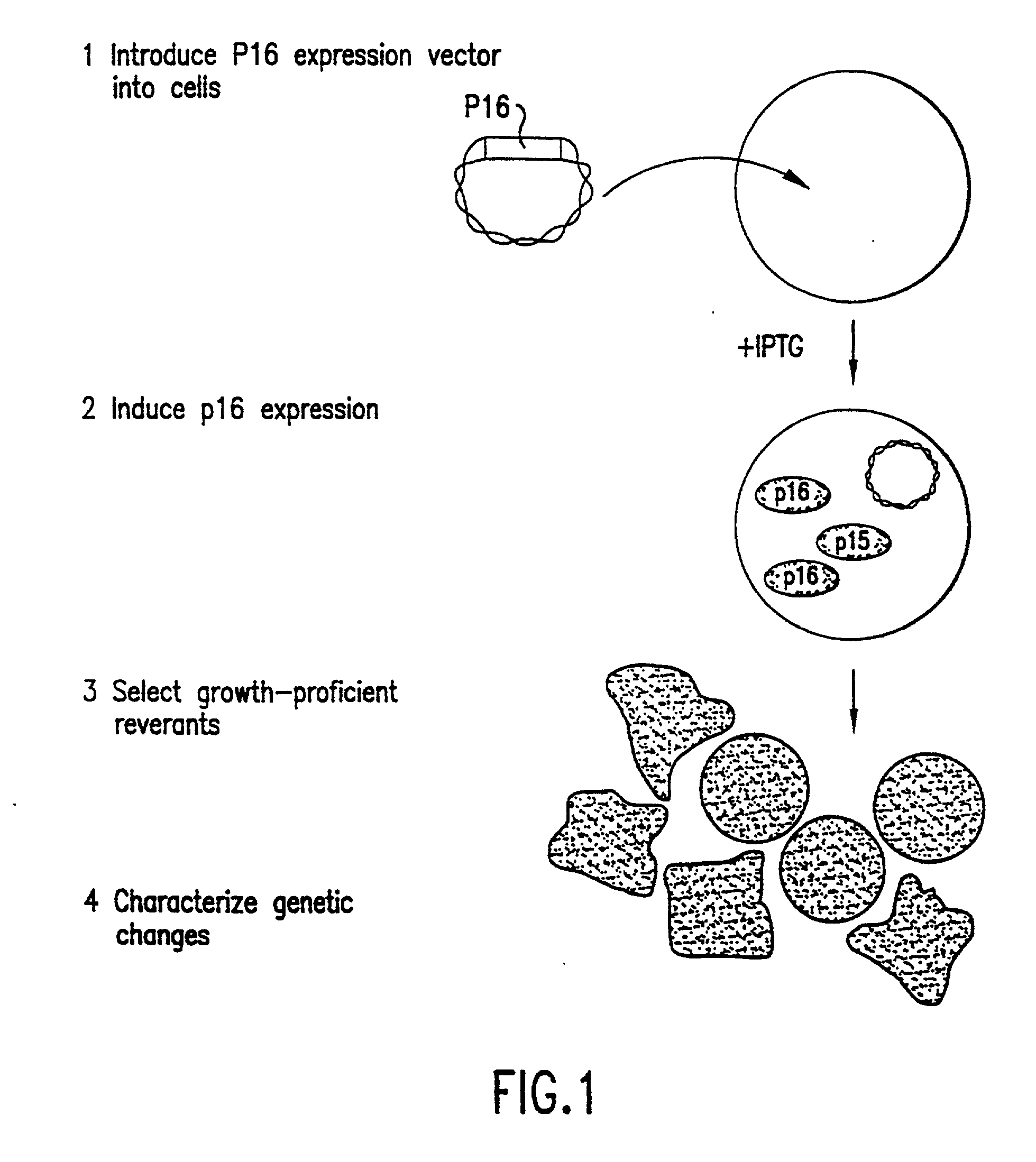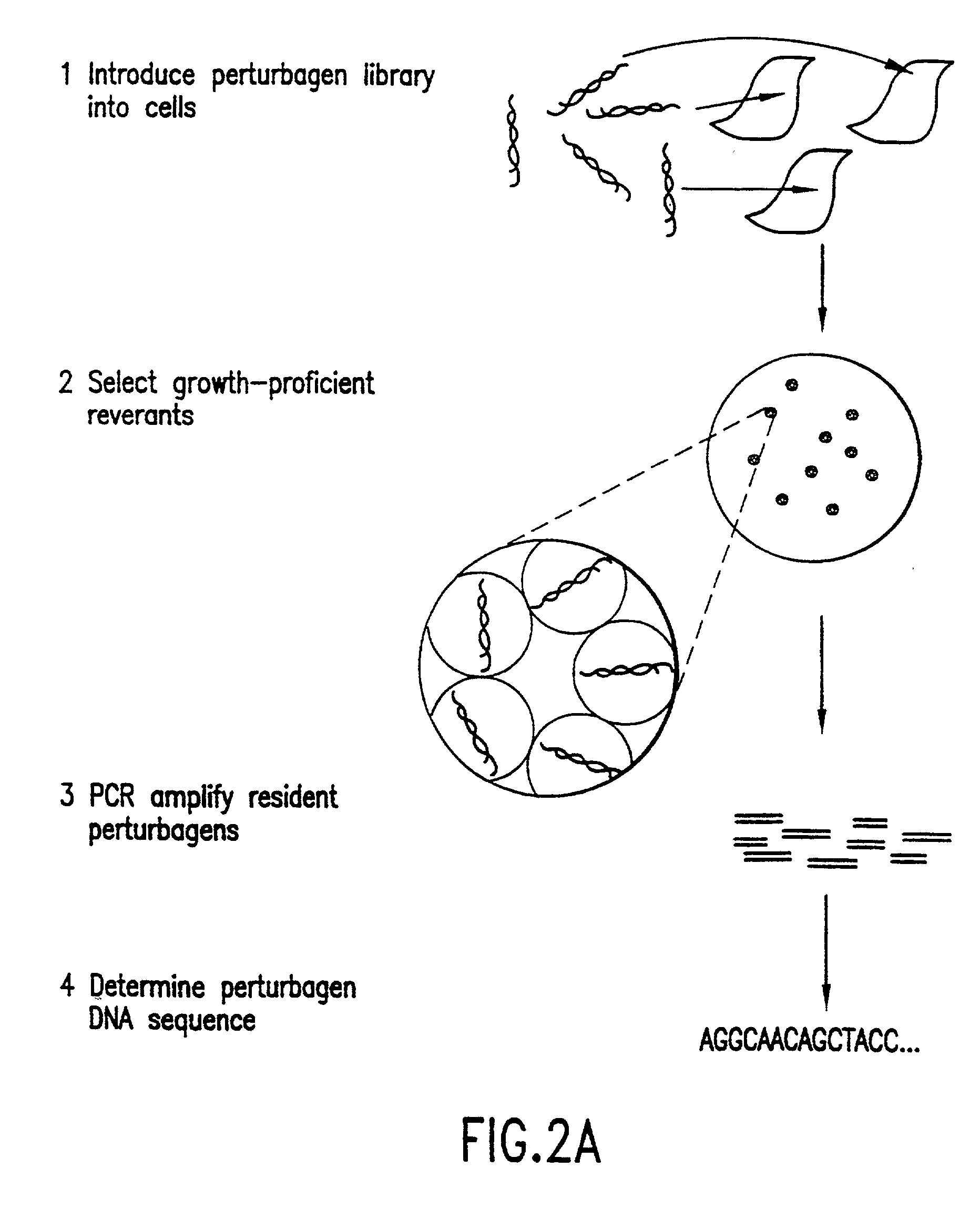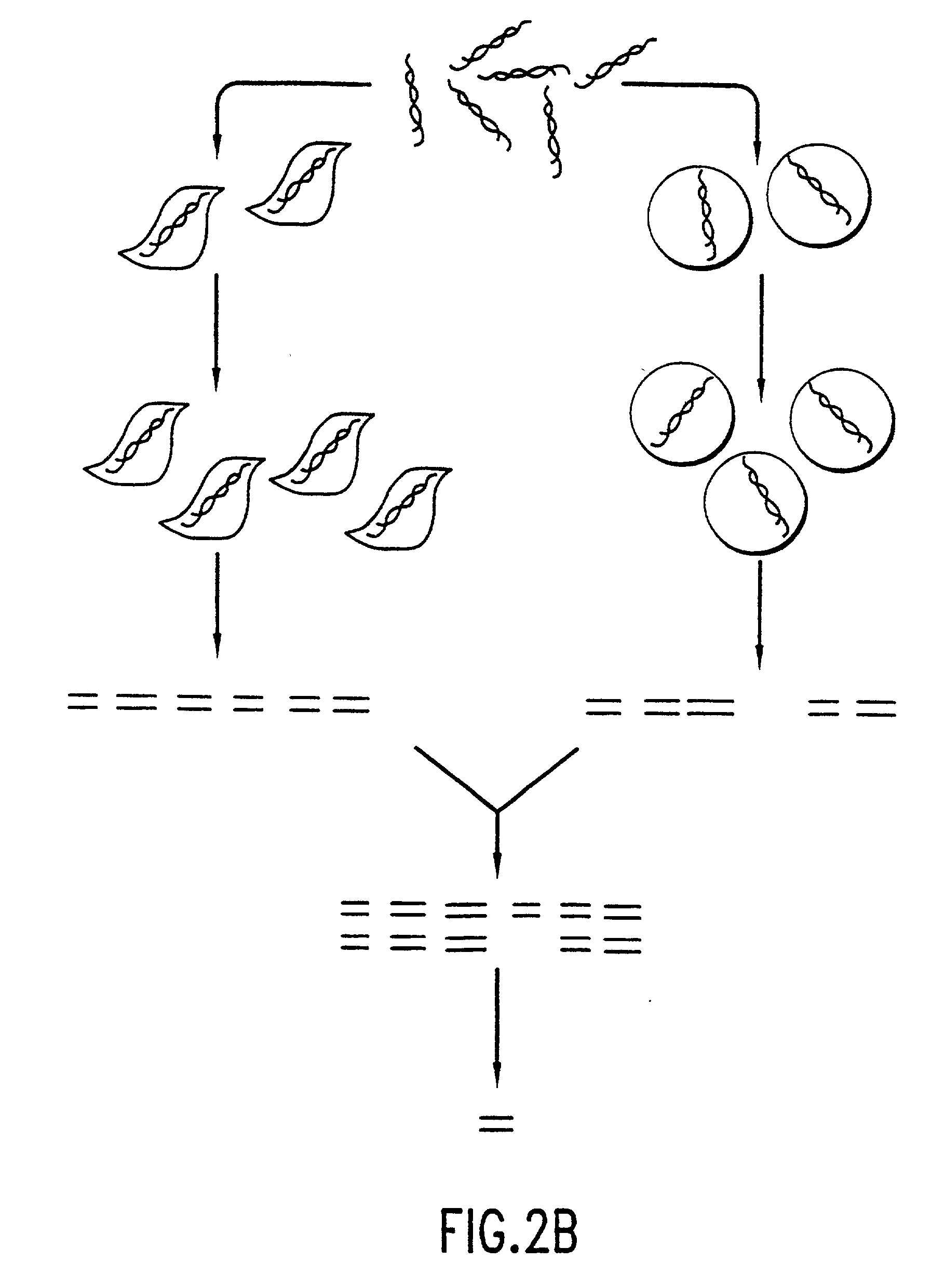Process for identification of genes encoding proteins having cell proliferation-promoting activity
a technology of protein encoding and cell proliferation, applied in the field of selection system for the identification of novel cell proliferation genes, can solve the problems of loss of growth control, uncontrolled cell proliferation, and severe diseases
- Summary
- Abstract
- Description
- Claims
- Application Information
AI Technical Summary
Benefits of technology
Problems solved by technology
Method used
Image
Examples
example 1
A. Example 1
Arrest of Melanoma Cells by Expression of P16
[0305] In this example, the generation of a growth-arrested melanoma cell line is described as a selection system of the present invention. The obtained growth-arrested melanoma cell line may be used for the selection and isolation of growth-proficient revertants. Analysis of these revertants may result in the identification and isolation of novel cell proliferation genes related to the development of diseases related to unregulated or inappropriate cell proliferation, for example, cancer.
[0306] The melanoma cell line HS294T, which lacks endogenous p16, was used to create a cell that could be forced into G.sub.0 / G.sub.1 arrest by introduction of the inducible p16 expression construct pOPRSVI.p16 (FIGS. 3A and 3B) into the cells. The promotor of the inducible p16 construct contains sequences from the Rous Sarcoma Virus (RSV) long terminal repeat (LTR) that act as a potent transcriptional initiator located upstream of the comple...
example 2
B. Example 2
Selection of Growth-Proficient Revertants
[0308] In this example, the selection of growth-proficient generated as revertants derived from the growth suppressed H2594T / p16.sup.+ melanoma cells generated as described in Example 1, supra, is described. Further analysis of the revertants will reveal the identity of cell proliferation genes useful for the diagnosis and prognosis of diseases related to uncontrolled or inappropriate cell proliferation, and for the development of targeted drugs for the treatment of disease related to uncontrolled cell proliferation.
[0309] To select revertants from the population of p16-arrested cells, HS294T / p16.sup.+ cells were plated in microtiter wells at a density of 2000 cells / well in the presence of IPTG. As a control, parental HS294T cells that continue to grow in the presence of IPTG were seeded at different densities among arrested HS294T / p16.sup.- cells in a separate set of microtiter wells. As expected, these wells gave rise to growing...
example 3
C. Example 3
Characterization of the Revertants
[0314] To ensure that the revertant cell lines of Example 2 were still resistant to IPTG-induced p16, the lines were returned to IPTG-containing media. In contrast to the original HS294T / p16.sup.+ cells which enter G.sub.0 / G.sub.1 arrest within twenty four (24) hours, all six revertant cell lines continued to grow. The percentages of cells in G.sub.0 / G.sub.1 in the presence and absence of IPTG were measured and compared to the distributions in various control cell lines. The revertant lines had largely similar growth profiles to the parental lines. The rev4 and rev6 lines appeared to have slightly lower G.sub.1 / G.sub.2 ratios indicating more significant changes to the cellular signal transduction (TABLE III) compared to the parentel H5294T / p16.sup.- line. The rev1 line appeared to possess some residual p16 sensitivity based on its partial arrest in response to IPTG.
3 TABLE III Line G.sub.1 / G.sub.2 (-IPTG) G.sub.0 / G.sub.1 (+IPTG) POP 2.6 ...
PUM
| Property | Measurement | Unit |
|---|---|---|
| pH | aaaaa | aaaaa |
| pH | aaaaa | aaaaa |
| pH | aaaaa | aaaaa |
Abstract
Description
Claims
Application Information
 Login to View More
Login to View More - R&D
- Intellectual Property
- Life Sciences
- Materials
- Tech Scout
- Unparalleled Data Quality
- Higher Quality Content
- 60% Fewer Hallucinations
Browse by: Latest US Patents, China's latest patents, Technical Efficacy Thesaurus, Application Domain, Technology Topic, Popular Technical Reports.
© 2025 PatSnap. All rights reserved.Legal|Privacy policy|Modern Slavery Act Transparency Statement|Sitemap|About US| Contact US: help@patsnap.com



